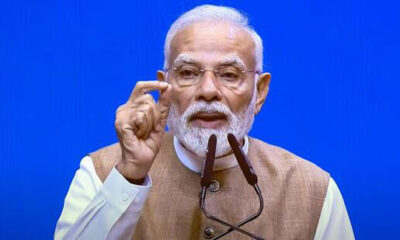ISRO’s SpaDeX Satellites Achieve Second Successful Docking
India’s space exploration capabilities have received a significant boost as the Indian Space Research Organisation (ISRO) successfully completed the second docking of its SpaDeX satellites. This achievement is part of the ongoing Space Docking Experiment (SpaDeX) mission, which aims to demonstrate advanced docking and rendezvous technologies in space.
The SpaDeX mission was launched on December 30, 2024, when ISRO placed two satellites, SDX01 and SDX02, into orbit. These two satellites, designed to work in tandem, are central to demonstrating the ability to perform in-space docking operations. SDX01, the “Chaser” satellite, is responsible for approaching and docking with SDX02, the “Target” satellite. The successful completion of the second docking further proves the mission’s viability and sets the stage for more complex space missions in the future.
Union Minister Jitendra Singh shared the successful update on the mission via the platform X on Monday, expressing his pleasure at the milestone achieved. He wrote, “Glad to inform that the second docking of satellites has been accomplished successfully.” This announcement further underscores the growing capability of ISRO in the field of space exploration.
The first docking between SDX01 and SDX02 took place on January 16, 2025. After a few weeks in orbit, the two satellites undocked on March 13, 2025, marking the completion of the initial phase of the experiment. With the second docking now successfully carried out, ISRO has entered the next stage of the mission, with additional tests planned over the next two weeks.
Purpose and Significance of the SpaDeX Mission
The SpaDeX mission is being hailed as a cost-effective technology demonstrator mission. ISRO aims to showcase the ability to perform orbital rendezvous, docking, and proximity operations with small spacecraft launched by the Polar Satellite Launch Vehicle (PSLV). These operations are critical for future space missions, especially those requiring satellite servicing, debris removal, and construction of large space stations.
ISRO defines the mission as a “technology demonstrator” designed to develop technologies that could serve multiple purposes, including future interplanetary missions, the Indian space station, and even crewed missions like Gaganyaan. By successfully demonstrating in-space docking, ISRO is positioning itself for future advancements in space technology.
One of the notable comments from ISRO’s chairman, V. Narayanan, after the first docking, was that the results from the SpaDeX mission would be pivotal for upcoming missions such as Chandrayaan 4, India’s crewed Gaganyaan mission, and the planned Indian space station. These missions require robust docking and rendezvous technology to ensure the safety and success of the spacecraft and their crews.
The SpaDeX mission is also an important leap forward for India in the global space community. With this achievement, India joins an elite group of countries—namely the United States, Russia, and China—that have successfully accomplished in-space docking operations. This success places India firmly on the map as a leader in space technology.
Looking Ahead: Future Implications and Experiments
The SpaDeX mission’s second docking is a significant step, but the work is far from over. ISRO has planned further experiments in the coming weeks, which will continue to test and refine the docking capabilities of these small satellites. These experiments are expected to provide valuable data and insights into improving the technology for use in larger-scale operations.
As the mission progresses, the data from these experiments could provide a critical foundation for ISRO’s future endeavors in space exploration, including satellite servicing missions, inter-satellite communication, and even the construction of space infrastructure. The successful demonstration of these docking operations will make it possible for India to take on more complex missions, such as building and maintaining a space station, which could be a game-changer in the future of Indian space exploration.
Conclusion
The successful completion of the second docking by ISRO’s SpaDeX satellites marks a significant achievement in India’s space exploration journey. The mission showcases ISRO’s technological prowess in in-space docking, a crucial step for more advanced and ambitious missions in the future. As India continues to make strides in space technology, SpaDeX paves the way for future missions that could not only enhance India’s space capabilities but also contribute to global advancements in space exploration. With additional experiments lined up, ISRO is poised to push the boundaries of space technology and continue its legacy of excellence in space exploration.
IT.




























